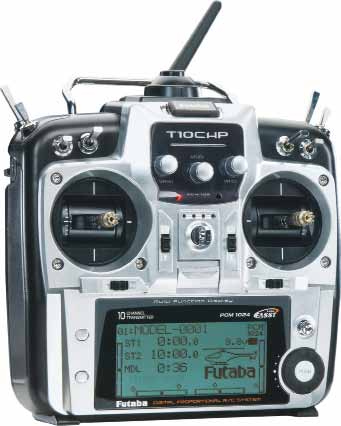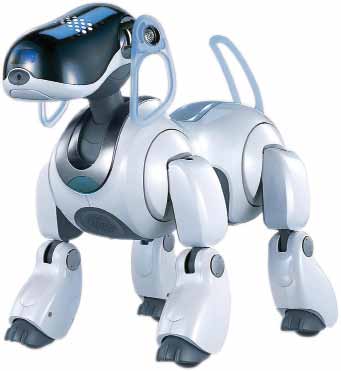“Outdoor toys like aero-modelling kits are often priced above Rs 30,000. These models have engines or high-performance brushless DC motors, and are controlled by high-end four- to fourteen-channel remote controls. The models might be exact replicas of fighter jets with real mini-sized jet engines on them. Cost of such toys could be around Rs 200,000,” explains Fahad Azad, managing partner, Robosoft Systems. His team is currently working on a do-it-yourself robotic platform with which a child can make multiple kits out of a single set of components. The robot can be controlled through a wireless remote that connects various motors on the controller brain. This will be priced below Rs 1000, and is likely to be launched in Indian retail stores this year.

Robotic toys are also a huge educational aid, even at the higher rungs of the educational ladder. The Nao Humanoid Robot from Aldebaran Robotics, for instance, is an ideal partner for research and teaching in the field of robotics and artificial intelligence. With 25 degrees of freedom, Nao is capable of executing a wide range of movements (walking, sitting, standing up, dancing, avoiding obstacles, kicking, seizing objects, etc.). It is fully-autonomous and can establish a secure connection to the Internet to download and broadcast content. It also has a vision system allowing it to capture and send photos, video streams, recognise coloured objects, and detect and recognise faces.
“Aldebaran Robotics has designed Nao to be fully-programmable. Anyone can control Nao via Choregraphe, a user-friendly behavioural editor, by programming C++ modules, or using Python or Urbi script languages. Its multiple sensors, 25 degrees of freedom, onboard computer and graphic programming software make it a complete and autonomous tool for your research. It can be concluded saying that Nao is one the most capable humanoid development platforms in the market today,” says N.H. Shekar, who is a member of RoboMSR—a group of robotics enthusiasts who are being mentored by Dr K.G. Srinivasa at the M.S. Ramaiah Institute of Technology, Bangalore.

Most of these toys are not manufactured in India but merely imported, and that too at price-points that make them the preserve of the elite. “Although not into manufacturing, Indian companies are involved in the designing of components and assembling of such toys throughout various factories in India. Many of the companies that are popular when it comes to high-tech toys are from the Far East, as they have been able to come up with new technologies even within toys. Companies like United Agencies, Milton Bradley, Playmate and Mayur Exim are the ones that are involved in the assembling of these toys in India. On the whole the market has a huge scope in a country like ours, and there will soon be development of such toys from our own country,” says Praveen Pitchai, Shekar’s team-mate.
[stextbox id=”info” caption=”Popular high-tech toymakers”]• Biloloid Robot Kits
• Dasatech
• Futaba
• Hacker
• Hasbro
• Innvo Labs (Pleo)
• JR Toys House
• Lego
• Microsoft Xbox
• Nintendo Wii
• PlayStation
• Silverlit Electronics
• Sony
• Tamiya
• Tiger Electronics (Furby)
• Tomy
• Vtech Toys
• WowWee Robotics[/stextbox]
Take a dekko at the components in them
Depending on the complexity, high-tech toys use components like sensors, actuators and processors or more complex embedded platforms—akin to or the same as those used in robots. Some of the components used are:
Sensors. There are various types of gyroscopes, accelerometers, digital compasses, pressure sensors, strain gauges, image processing cameras, position sensors, bump switches and infrared sensors that are used to detect and avoid obstacles. “Other sensors comprise clap sensors, light sensors and line-flowing sensors,” says Azad.
Touch sensors, which comprise transducers that measure pressure to replicate the sense of human touch; inclinometer sensors, which measure the deviation from the horizon using gravity; position-sensitive devices and detectors, which are optical position sensors to measure the position of a light spot in one- or two-dimensions on a sensor’s surface are all frequently used in today’s high-tech toys.
Integrated circuits. Dozens of integrated circuits (ICs) go into the making of high-tech toys. The number and the family of ICs used mainly depend on the desired functionality of that particular toy. “Say, if you have a plug-in toy that moves around the room avoiding obstacles, it might have ICs such as the microcontroller—to work as the brain of the toy (many families are used like AVR, PIC, etc.); a voltage regulator—to manage charging and tasks like stepping down the applied voltage to required voltage (e.g., 7805); capacitors and resistors; light-emitting diode (LED) drivers like the LT1618, if necessary; a motor driver—that controls the direction and speed of the motors; RS232 (MAX232)—for serial communication and changing the function of the toy (generally used in educational toys like Lego Mindstorm),” says Shekar.
8- to 32-bit microprocessors are commonly used in such toys. Pleo, for example, uses a 32-bit microprocessor.
[stextbox id=”info” caption=”A detailed example—the Genibo-QD Robot Dog” bgcolor=”2693FF”]
Genibo is an articulated dog-like four-legged robot that can do all kinds of motions including scratching the ground, standing on front paws, dancing, taekwondo, etc. Genibo expresses its feelings through approximately 700 emotional actions, the emoticon LEDs in its eyes, and puppy sounds. It can recognise human faces, such as the owner’s face through the camera on its nose. As it gets closer to its owner, the Genibo becomes happier and better at finding and following its owner.






